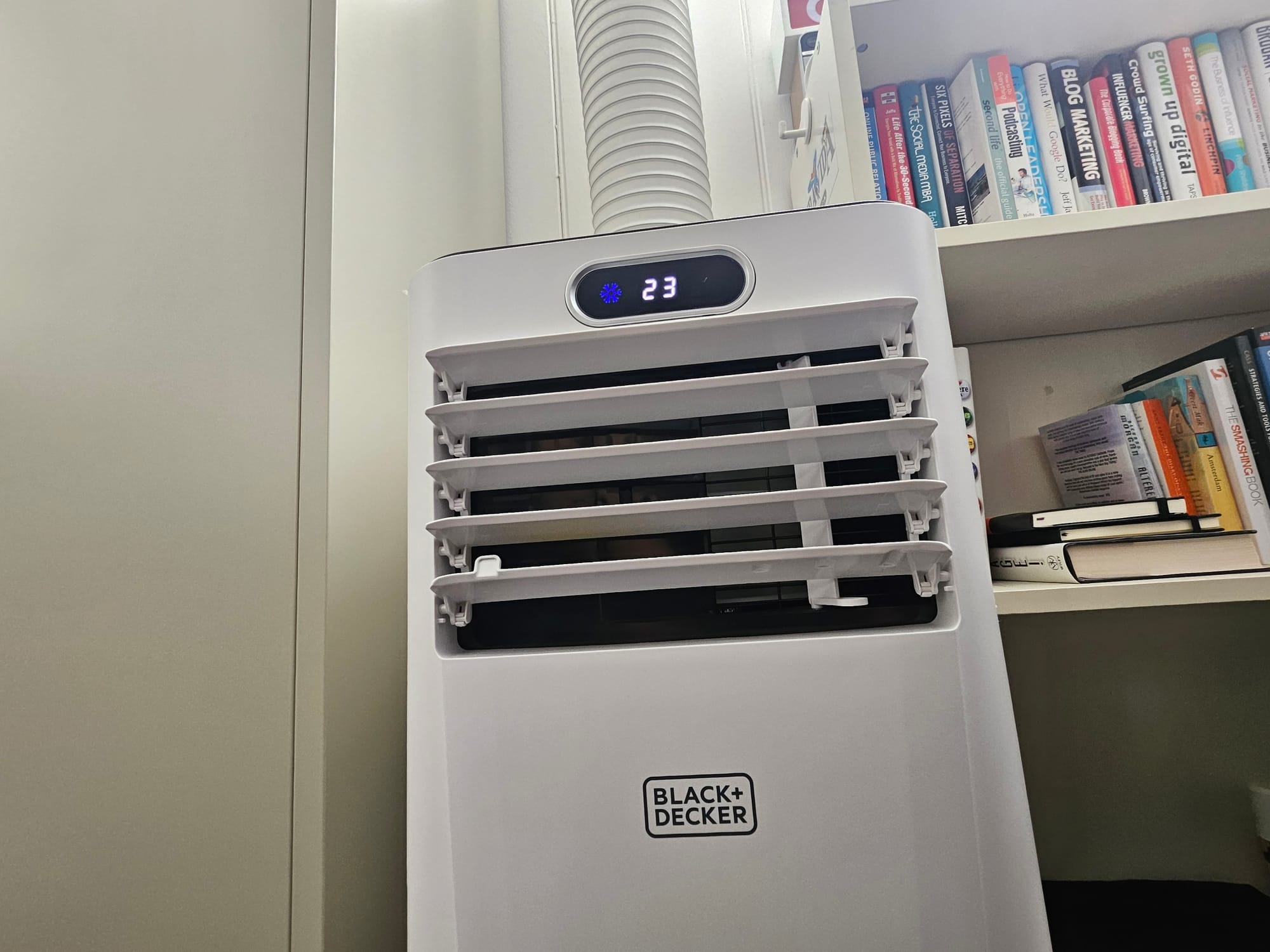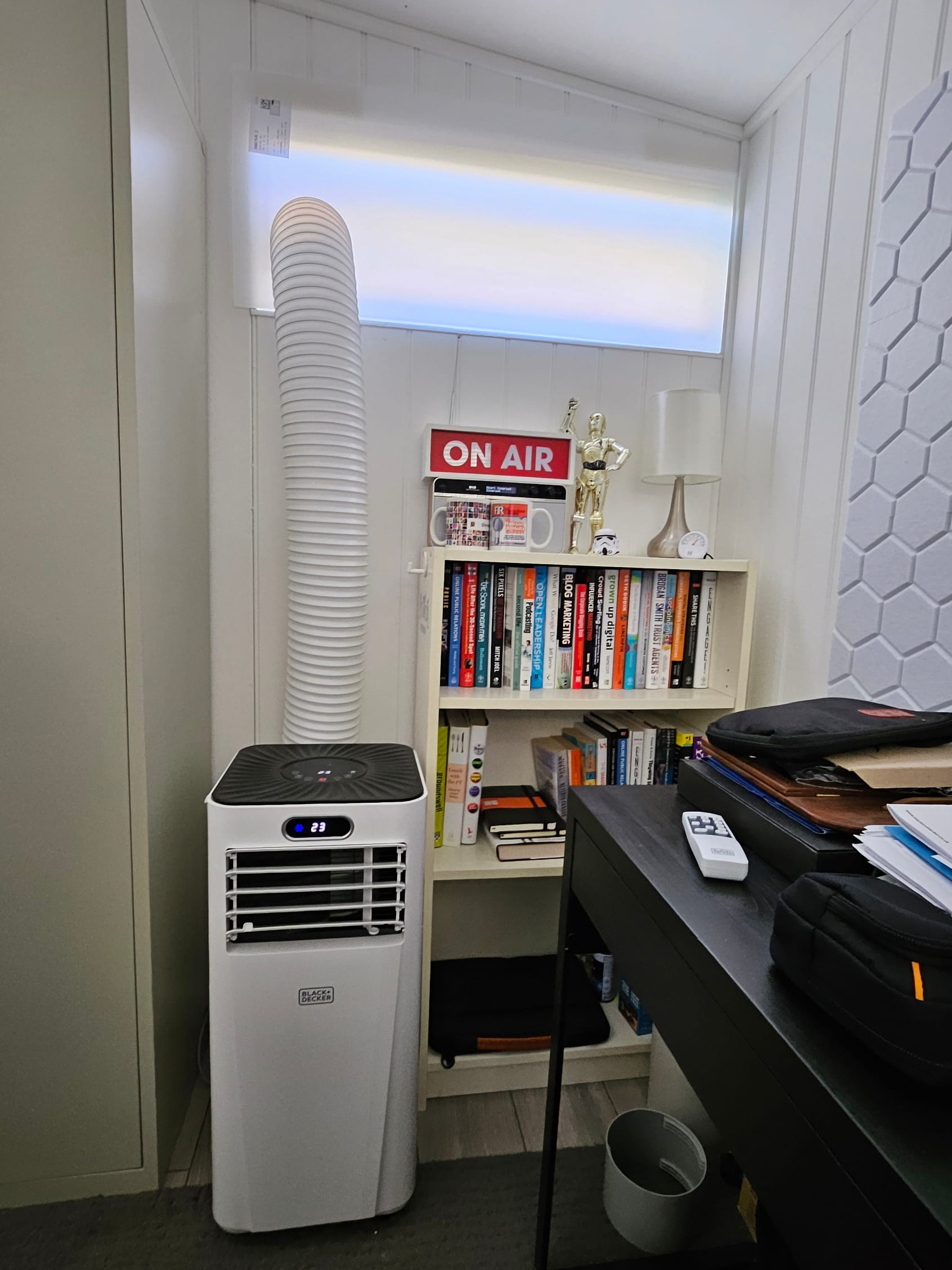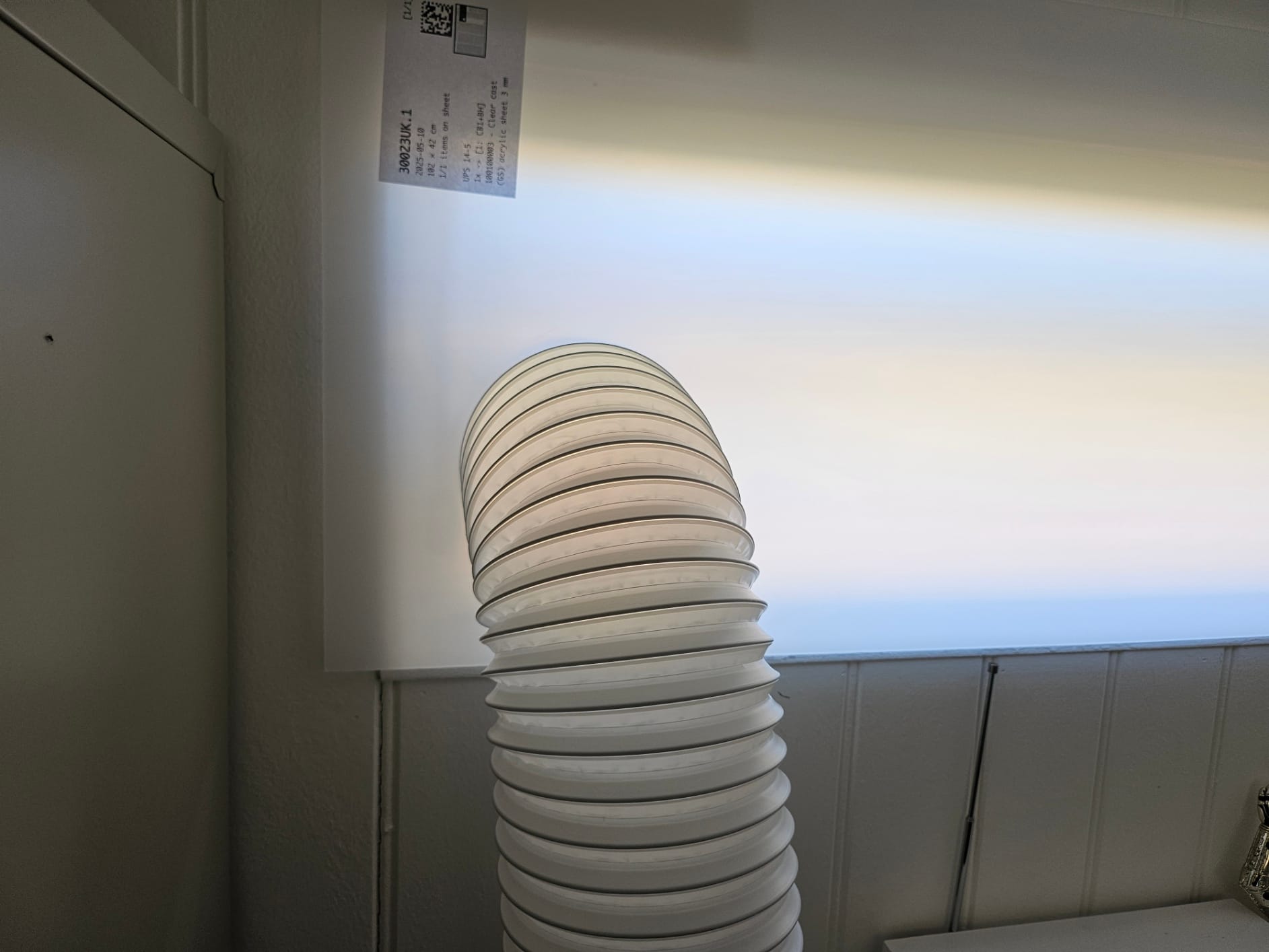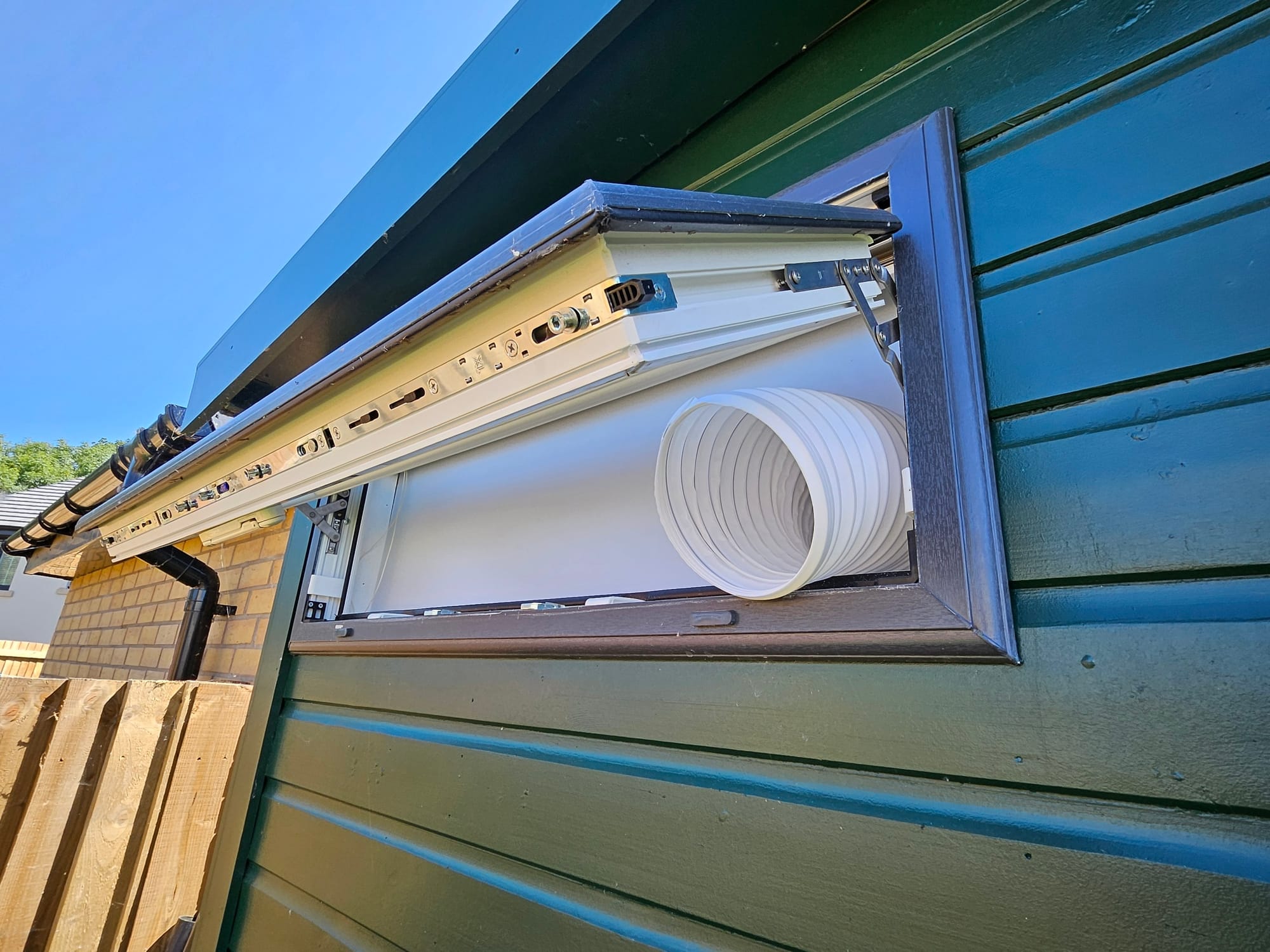With the latest heatwave gripping much of southern and eastern England this past week – temperatures here in south Somerset nudging into the low 30s Celsius – I'm more grateful than ever for one particular recent purchase: a portable air conditioner that's installed in my garden studio.
The studio measures 80 square feet, about 7.8 square metres. It has double-glazed doors and windows and is fully insulated throughout. Great for the winter, but not so good in a heatwave with the sun beaming out of a cloudless sky and treating the building like an oven.
In May, just before the first heatwave we had, I bought a Black+Decker BXAC40024GB, a compact 3-in-1 portable unit (cooling, fan, and dehumidifier), from Currys on a sales offer price of less than £250. It's rated at 7000 BTU, which is more than enough for the garden studio.
The Black+Decker unit is marketed as ideal for small spaces, and it’s exceeded my expectations in terms of comfort, performance and reliability.
In TechRadar a few days ago, Matt Bolton, the magazine's Managing Editor for Entertainment, wrote an excellent review of his experiences with a portable air conditioner in his home. He summed it up well: these machines can be game-changers during a heatwave, once you get the setup right.
Of particular note is what he shared in how he crafted a DIY cardboard panel to hold the exhaust hose in place on a casement window and keep the hot air out – a clever solution, if a bit makeshift.
I’d considered something similar, but as I’d be removing and refitting the panel frequently, I wanted something far more durable and secure. Most importantly, I wanted to make the setup as airtight as possible to maximise efficiency – no warm air sneaking back in around the edges.
A Setup That Works
In my case, with a high-level rectangular casement window, the AC hose was always going to be the tricky part. Like many portable AC units, mine came with a fabric fitting kit for casement windows that uses zips and Velcro. I gave it a try, but frankly, it was a pain. Poor fit, fiddly, awkward to handle, and far from airtight.
Instead, I took a more practical route: I ordered a custom-sized acrylic panel from a specialist supplier, the aptly-named Plastic Sheets Shop. With a precise 150mm circular cut-out for the hose, the panel cost around £40 – well worth the small investment for year-on-year usability. Using industrial-strength Velcro strips, less than £15 on Amazon, I affixed the panel to the window opening.




The result – a secure, airtight connection through which the hose fits snugly, that not only looks neat but is also easy to remove when the unit isn’t in use.
Performance That Delivers
In recent days, when it’s been up to 32°C outside at times with uncomfortable humidity, my studio has stayed a cool and consistent mid/high 20s. It’s made all the difference to how I work, think, and focus, with no clammy air, just dry and comfortable.
I'm also making full use of the solar panels on my house roof to power the AC unit.
The unit does make noise, especially when on its high air conditioning setting. However, I don't find it intrusive. When I have it on and make video calls, etc., others say they can barely hear the sound, if they even notice.
If, like me, you work in a small separate office or studio space, a portable air conditioner can be a real blessing. In years past, I relied on fans and air coolers. Just not good enough. During heatwaves like this – increasingly looking like the new normal for British summers – a portable air conditioner becomes an indispensable feature of the home office workspace.
The right machine for the right space, smart placement, and a little DIY ingenuity can make it all work perfectly.
Related Reading:
- The Smartest Fix Came from an 8-Year-Old (29 June 2025)



















